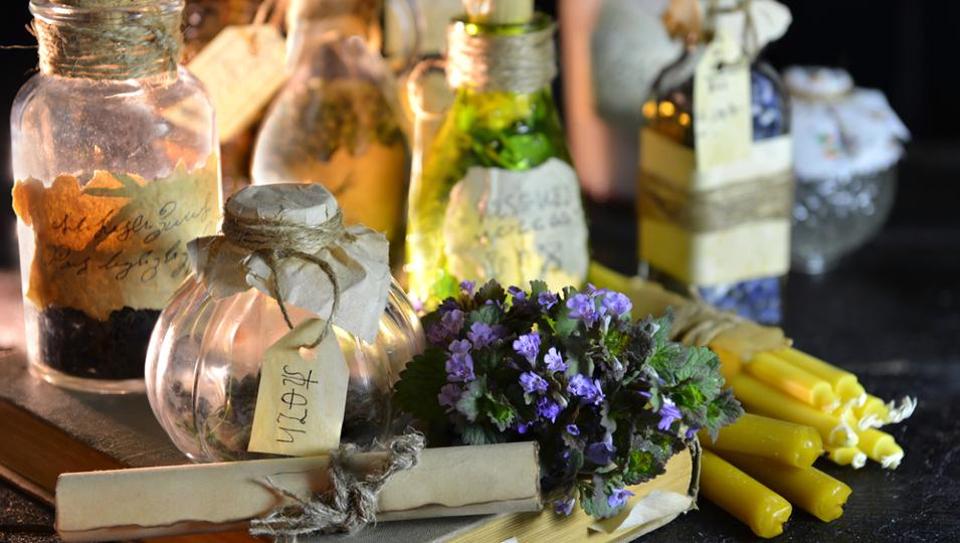
A pinch of powdered chimpanzee bone, some gecko saliva, a dash of vulture brain. These are not the ingredients of a fairytale witches’ brew, but some of the prized substances helping drive the multi-billion dollar illegal trade in animal parts touted to cure anything from a hangover or asthma, to cancer and AIDS.
Along with better-known products, such as rhino horn, pangolin scales, and tiger bone, dealers do a brisk trade in some more obscure ones too — dried seahorse, sloth claws, manta ray gills, and macaque embryos. Many are creatures listed as endangered or threatened.
And while some of the products are key constituents in centuries-old traditional cures prescribed by healers in Asia and Africa, others are fictional cure-alls sold by cynical quacks, experts say. “We do see modern-day snake oil salesman,” said John Scanlon, secretary general of the Convention on International Trade in Endangered Species.

While stressing “we will never criticize any traditional practices,” he condemned “people who are promoting certain wildlife products as having properties that have no association with traditional medicine”. “They’re really preying on people in very vulnerable situations.” These include peddlers of rhino horn to cure cancer — an unproven claim that has contributed to the decimation of these majestic beasts. Sudan, the world’s last male northern white rhino, died in Kenya this week.
In 1960, there were an estimated 1,00,000 black rhino in Africa — today there are fewer 28,000 rhinos of all species left in Africa and Asia, according to a 2016 UN World Wildlife Crime Report. “The current rhino poaching crisis, which began around 2007… does have its origins in bogus medicinal use,” said Richard Thomas of TRAFFIC, which monitors wild animal trade.

No evidence
A surge in demand in Vietnam is ascribed to a senior politician claiming in the mid-2000s that rhino horn cured his cancer. “This has no basis in scientific fact, but was almost certainly the urban myth that led to the crisis,” said Thomas.
As incomes have increased in Asia, so has demand for rhino horn, which can sell for tens of thousands of dollars per kilo. Today, rich people us it as a tonic, even for hangovers, and as a display of wealth. “And although there is a popular myth in Western society (that) rhino horn is used as an aphrodisiac in Asian culture, it was never prescribed as such — ironically, it has now taken on such a use in Vietnam,” said Thomas.
Now banned in China, Rhino horn originally was prescribed by traditional healers as a treatment for fever. Some scientific studies have shown that it is somewhat effective for this purpose, though not more so than aspirin. Other traditional medicines have been more successfully assimilated by westerners. Bear bile was found to contain an ingredient called ursodeoxycholic acid, effective in treating a liver disease. It is now produced synthetically.
Similarly, the antimalarial artemisinin, was originally extracted from the wormwood plant, and an ingredient of the African Cherry tree is used to make prostate medicine. But demand for many plant and animal ingredients today is driven by nothing other than superstition, experts say. The scales of the pangolin, or scaly anteater, are sold raw or fried in Asia for as much as $500 per kilogram for treating asthma and migraines, or stimulate milk production in breast-feeding women.
Of the eight pangolin species, two are listed as critically endangered, two as endangered and four as vulnerable by the International Union for the Conservation of Nature. And according to Thomas, “there is no scientific evidence to supposed any supposed properties” of pangolin scales.
Between 2007 and 2013, parts from an estimated 1,50,000 pangolins were seized every year on average worldwide, but monitors say this is likely just “a fraction” of the illegal trade. There is similarly no support for the alleged AIDS-curing properties of Tokay geckos, or the virility boost provided by tiger bone. There may be as few as 3,000 tigers left in the wild.
Strong message
On Friday, the Intergovernmental Science-Policy Platform on Biodiversity and Ecosystems Services (IPBES) meeting in Medellin, Colombia, warned that biodiversity was declining in every world region. “Superstition, traditional medicine, and viral marketing techniques are aggravating the pressure on animal species,” said Charlotte Nithart of French wildlife monitor Robin des Bois.
In a recent report, the group recorded illegal trade in products such as giraffe marrow bone for curing AIDS in Africa, and powdered chimpanzee bone to boost virility. The brains of endangered vultures are smoked in South Africa to boost foresight and predict lottery numbers.
According to WWF, the illicit trade in wildlife is worth about $19 billion (15.4 billion euros) per year — making it the fourth largest illegal trade after drugs, counterfeiting, and human trafficking.
The solution?
“People are increasingly being caught and prosecuted, sent to jail for illegal trade,” said Scanlon. “That sends a strong message.” But a changing people’s minds is key, and difficult. “Being culturally sensitive is important,” said Thomas. “If someone is brought up to believe something is a medicine, it simply doesn’t work telling them it isn’t, especially if that message comes from a complete outsider.”
[“source=hindustantimes”]